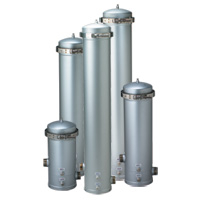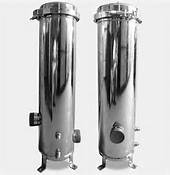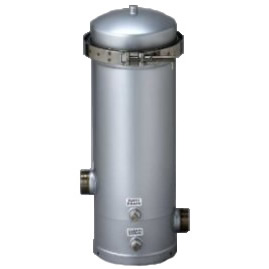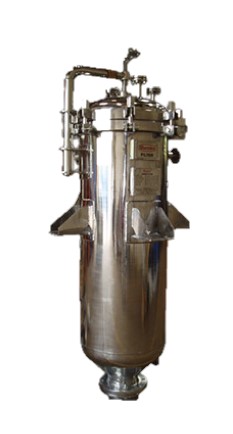Description
A Bag and cartridge filter housing plays a crucial role in the filtration industry, ensuring cleanliness and purity in various processes and applications. These housings provide a secure and efficient environment for installing filtration bags or cartridges, enabling the removal of contaminants and impurities from liquids and gases. In this article, we will explore the workings and benefits of both bag and cartridge filter housings.
Let us start by discussing bag filter housings. Bag filters are a popular choice for many industries due to their ease of use and cost-effectiveness. The bag filter housing serves as a protective container for holding filter bags, which are made of various materials such as polypropylene, nylon, or polyester. These bags trap solid particles and prevent them from passing through, ensuring a clean and filtered liquid or gas stream.
Sizes
A Bag and cartridge filter housing is available in different sizes and configurations to accommodate various flow rates and applications. They are typically constructed from materials like stainless steel, carbon steel, or plastic, making them durable and resistant to corrosion. The housing design ensures a tight seal, preventing any bypass of unfiltered material. Some housings also feature a quick-release mechanism for easy bag replacement and maintenance.
Properties
The advantages of bag filter housings include their high dirt-holding capacity and lower cost compared to other filtration options. The larger surface area of the filter bags allows for efficient particle capture, reducing the need for frequent bag changes. Bag filters are widely used in industries such as water treatment, chemical processing, food and beverage, pharmaceuticals, and many others.
Now, let’s move on to cartridge filter housings. Cartridge filters, unlike bag filters, use cylindrical cartridges made of pleated material, cellulose, or activated carbon. These cartridges have a greater surface area when compared to bag filters, allowing for higher flow rates and more efficient filtration.
Cartridge filter housings come in various styles and designs, including single and multi-cartridge configurations. Similar to bag filter housings, they are constructed from durable materials like stainless steel, carbon steel, or plastic. The design ensures a secure housing for the cartridges and maintains a tight seal to prevent any bypass.
Benefits
The benefits of cartridge filter housings include their ease of installation and removal, higher particle removal efficiency, and longer service life. Cartridge filters are commonly used in applications where fine filtration is required, such as in the pharmaceutical industry, electronic manufacturing, and other sensitive processes.
In conclusion, both bag and cartridge filter housings serve as vital components in the filtration industry. Bag filter housings are cost-effective and offer high dirt-holding capacity, making them suitable for a wide range of applications. Cartridge filter housings, on the other hand, provide higher particle removal efficiency and are commonly used in industries that require fine filtration. By selecting the appropriate filter housing and filter media, industries can ensure optimal filtration performance and maintain the purity of their processes and products.
To further understand the functionalities of bag and cartridge filter housings, let’s delve into their operation and maintenance.
What do they consist of?
Bag filter housings typically consist of an inlet and outlet port, a filter bag, and a removable cover or lid. The liquid or gas to be filtered enters the housing through the inlet port and passes through the bag, where the contaminants are captured. The filtered material then exits through the outlet port, while the impurities remain trapped in the bag. Regular maintenance involves monitoring pressure differentials across the filter bag to determine when it needs to be replaced. When replacing the bag, the cover or lid is removed, and the used bag is disposed of before inserting a new one.
Cartridge filter housings, on the other hand, contain multiple cylindrical cartridges arranged in a specific pattern. The liquid or gas enters the housing and flows through the cartridges, where the filtration process occurs by trapping particles on the outer surfaces of the cartridges. The filtered material then exits through the outlet port. Maintaining cartridge filter housings involves periodically checking the pressure differential across the cartridges and replacing them as needed. The housing is typically designed with quick-release mechanisms or swing bolts to facilitate easy cartridge replacement.
Maintenance of a Bag and Cartridge Filter Housing
Proper maintenance of both bag and cartridge filter housings is essential to achieve optimal filtration performance. Regular inspection and cleaning of the housing, ensuring proper seals and gaskets, and adhering to manufacturer guidelines for filter replacements are key aspects of maintenance. Additionally, following these practices helps to maximize the lifespan of the filter housings, minimize downtime, and ensure efficient filtration.
When selecting a bag or cartridge filter housing, various factors should be considered, such as the desired filtration efficiency, flow rate requirements, operating conditions (temperature, pressure, compatibility of materials), and maintenance processes. Consulting with filtration experts or manufacturers can help in determining the most suitable housing for specific applications.
It is worth mentioning that developments in filtration technology, such as advancements in filter media, housing designs, and automation, continue to evolve. Furthermore, it is anticipated to bring even more innovative solutions to the filtration industry, enhancing efficiency, ease of use, and performance.
Crucial Component of a Bag and Cartridge Filter Housing
In summary, bag and cartridge filter housings are crucial components in filtration systems, providing a secure environment for filter bags and cartridges. Bag filter housings offer a cost-effective solution with high dirt-holding capacity, while cartridge filter housings provide higher efficiency and finer filtration capabilities.
Proper maintenance and adherence to manufacturer guidelines are essential for achieving optimal filtration performance. By choosing the right filter housing and filter media, industries can ensure cleanliness, purity, and operational efficiency in their processes.
Types of filter Housings
There are several types of bag and cartridge filter housings available in the market, each designed to meet specific filtration requirements. Let’s take a look at some of the common types:
Single Bag Filter Housings
These housings are designed to hold a single filter bag. Furthermore, they are compact and typically used for smaller flow rates or applications where space is limited.
Multi-Bag Filter Housings
As the name suggests, these housings can accommodate multiple filter bags simultaneously. Furthermore, they are suitable for applications with higher flow rates or where a higher dirt-holding capacity is required. Multi-bag housings often have a common inlet and outlet for efficient filtration.
Top-Entry Bag Filter Housings
Top-entry housings allow for easy installation and removal of filter bags. Moreover, the cover or lid of the filter housing can be easily opened, enabling quick access to the bags for replacement or maintenance.
Side-Entry Bag Filter Housings
Side-entry housings provide a convenient option for installing and removing bag filters. With the side-entry design, the housing can be accessed from the side, making bag replacement and maintenance simpler.
Cartridge Filter Housings
Cartridge filter housings are available in various configurations to accommodate different cartridge sizes and quantities. Moreover, they can range from single-cartridge housings to multi-cartridge housings that can hold several cartridges in a parallel or series arrangement.
Standard Cartridge Filter Housings
Standard cartridge housings have a basic design and are suitable for general filtration applications. They often feature a top or bottom closure with inlet and outlet ports.
Sanitary Cartridge Filter Housings
These specialized housings are designed for applications where cleanliness and hygiene are critical, such as in the food and beverage or pharmaceutical industries. Moreover, they are constructed with smooth surfaces, sanitary connections, and easy disassembly for thorough cleaning.
High-Pressure Cartridge Filter Housings
High-pressure housings are designed to withstand higher operating pressures, making them suitable for applications where filtration needs to be carried out under elevated pressures.
Stainless Steel Filter Housings
Stainless steel housings are known for their durability and resistance to corrosion. Additionally, they are commonly used in industrial applications where the filtration process involves aggressive fluids or operating conditions.
These are just a few examples of the types of bag and cartridge filter housings available. It is important to consider the specific filtration requirements, flow rates, compatibility with the process fluids, and maintenance considerations when selecting the most appropriate housing for a particular application. Additionally, consulting with filtration experts or manufacturers can provide valuable guidance in choosing the right type of housing for specific filtration needs.
Bag Filter Type
Advantages
- Cost-effective: Bag filter housings offer a lower initial investment cost. This is when compared to other filtration options, making them a popular choice for many industries.
- High dirt-holding capacity: The larger surface area of the filter bags allows for efficient particle capture and a longer service life. This helps reduce the frequency of bag replacements.
- Easy maintenance: Bag replacement is relatively straightforward, often involving a quick-release mechanism or lid that allows for easy access.
- Versatility: Bag filter housings can accommodate various filter bag materials and micron ratings. This makes them suitable for a wide range of applications across different industries.
- Wide range of sizes: Bag filter housings are available in different sizes and configurations, allowing for flexibility in flow rates and application requirements.
Disadvantages
- Limited filtration efficiency: Bag filters generally provide coarser filtration capabilities compared to cartridge filters. This may not be suitable for applications that require fine particle removal.
- Limited compatibility with certain fluids: Bag filter housings may not be suitable for handling corrosive or high-temperature fluids, depending on the material of construction.
- Potential for bypass: Poor installation or improper sealing of the bag filter housing could result in bypass and reduced filtration efficiency if not correctly addressed.
Cartridge Type Filters
Advantages
- Higher filtration efficiency: Cartridge filters offer finer filtration capabilities, allowing for the removal of smaller particles. Thus achieving higher levels of filtration efficiency.
- Longer service life: Cartridge filter housings can accommodate pleated cartridges with a larger surface area. This results in longer service life and reduced maintenance requirements.
- Easy installation and replacement: Cartridges can be easily installed and replaced in cartridge filter housings. They typically feature quick-release mechanisms or swing bolts for convenience.
- Better compatibility with fluids: Cartridge filter housings are available in materials that are compatible with a wide range of fluids. This includes corrosive or high-temperature liquids.
- Suitable for applications with high flow rates: Cartridge filter housings can handle higher flow rates compared to some bag filter housings. This makes them suitable for applications requiring fast filtration.
Disadvantages
- Higher initial cost: Cartridge filter housings can involve a higher initial investment compared to bag filter housings, particularly for certain configuration types.
- Limited dirt-holding capacity: Cartridges may require more frequent replacements due to their smaller size, resulting in higher maintenance costs in applications with heavy contamination.
- Potential for cartridge damage: Cartridges can be susceptible to damage if exposed to high flow rates or high solid loading conditions, leading to decreased filtration efficiency.
It’s important to consider the specific filtration requirements, budget, maintenance capabilities, and compatibility with the process fluids when choosing between bag filter housings and cartridge filter housings. Consulting with filtration experts or manufacturers can provide further guidance in selecting the most suitable option for a particular application.
Industries that Use Bag and Cartridge Filters
Bag and cartridge filters are utilized in a wide range of industries and applications where the removal of contaminants or impurities from liquids or gases is essential. Here are some industries that commonly use bag and cartridge filters:
Water Treatment
A Bag and Cartridge Filter Housing are extensively used in water treatment processes, including municipal water treatment plants, industrial water filtration systems, and residential water filtration systems. Additionally, They help remove sediment, suspended solids, chemicals, and other impurities from the water.
Chemical Processing
Bag and cartridge filters play a vital role in chemical processing industries. These industries such as pharmaceuticals, petrochemicals, paints and coatings, and specialty chemicals. They help maintain product purity and remove particulates, catalysts, or unwanted substances from process fluids.
Food and Beverage
Bag and cartridge filters are widely employed in the food and beverage industry to ensure product safety, quality, and regulatory compliance. Additionally, they are used for the filtration of beverages, juices, oils, sauces, dairy products, and other liquid food applications.
Oil and Gas
A Bag and Cartridge Filter Housing are utilized in upstream, midstream, and downstream operations of the oil and gas industry. They help remove solids, sediments, and contaminants from various fluids, including crude oil, natural gas, fuel oils, and hydraulic fluids.
Automotive
Bag and cartridge filters are used in the automotive industry. They are used for applications such as fluid filtration (engine oil, fuel, hydraulic fluids), paint booth filtration, and air filtration in manufacturing processes.
Pharmaceuticals
Bag and cartridge filters are crucial in pharmaceutical manufacturing, particularly in drug formulation, sterile production, purification, and quality control. They help maintain the required level of cleanliness and minimize contamination risks.
Electronics
A Bag and Cartridge Filter Housing are employed in the electronics industry for applications such as ultrapure water filtration. Additional industries are chemical purification and removal of particulates from gases used in semiconductor manufacturing processes.
Mining and Metals
Bag and cartridge filters are used in the mining and metals industries. They are used for applications such as dewatering, tailings and slurry filtration, and removal of metal contaminants or impurities.
Pulp and Paper
Bag and cartridge filters are utilized in the pulp and paper industry to remove contaminants, fibers, and sediment from process water, cooling water, and other fluids involved in paper production.
These are just a few examples of the industries that rely on bag and cartridge filters. Various other sectors, including textiles, power generation, wastewater treatment, agriculture, and more. Finally, they also utilize these filters to achieve efficient and reliable filtration processes.
SRS liquid-filtration-sizing-data-sheet






